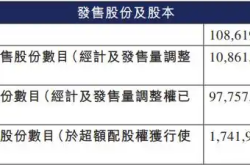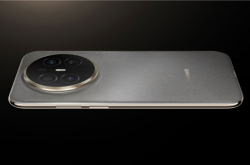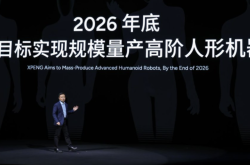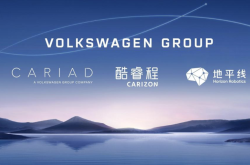Asian Auto Market | South Korea May 2025: Tesla Soars, BYD Gradually Builds Presence
![]() 06/20 2025
06/20 2025
![]() 510
510
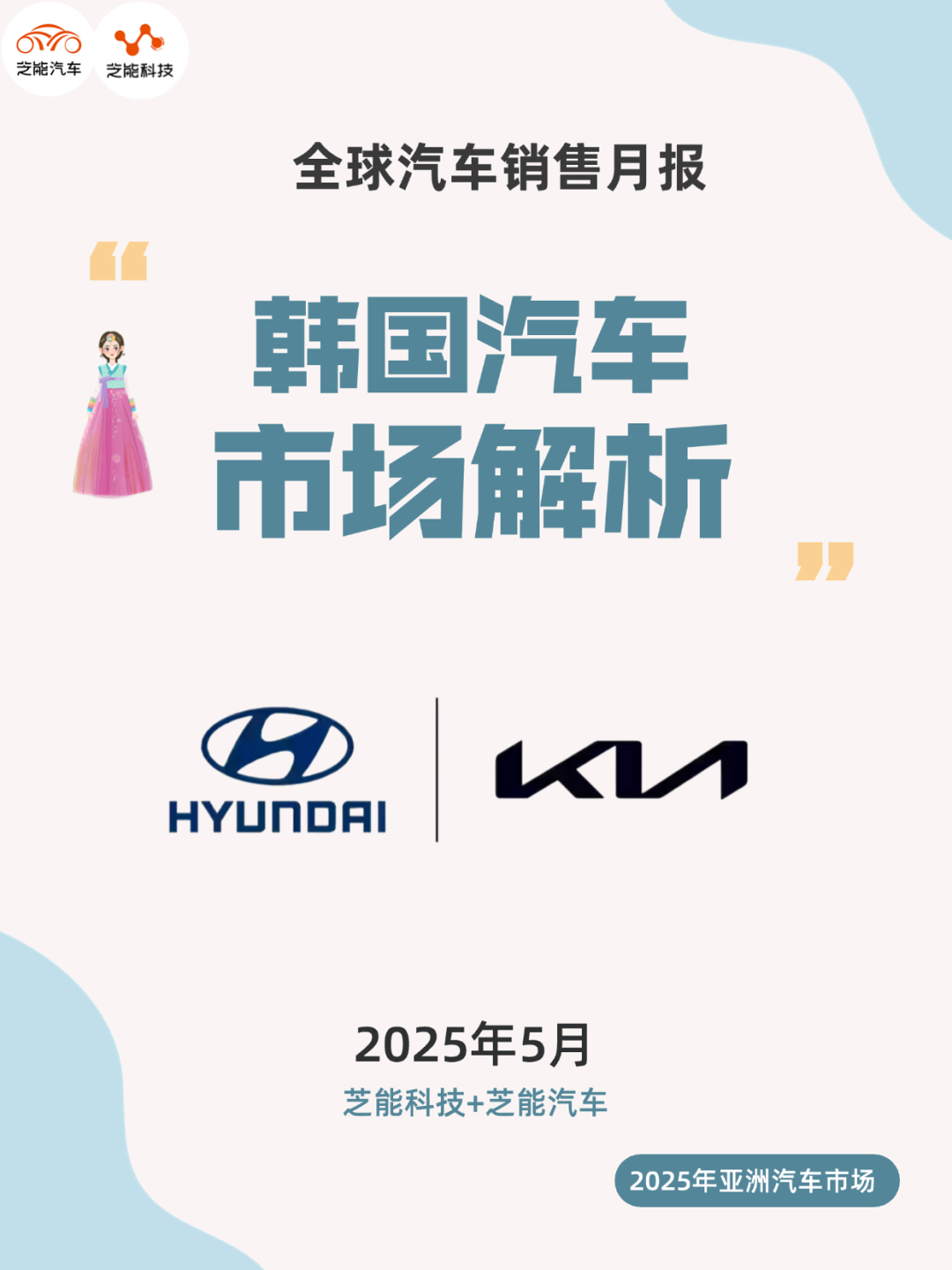
In May 2025, the South Korean automotive market maintained a steady pace with a marginal 0.4% year-on-year growth, yet subtle shifts were evident within its internal structure.
Despite the traditional dominance of local automakers Hyundai and Kia, Tesla emerged as the top-selling foreign brand, bucking global trends. Meanwhile, sales of the Hyundai Palisade skyrocketed to second place, challenging the Kia Sorento's nine-month reign as the market leader.
Among foreign brands, sales of multiple high-end imported vehicles surged, and the increasing activity of electric vehicle brands heralded an accelerated market transformation.
01
Overall Sales Stability: Local Market Share vs. Foreign Brands
In May 2025, the South Korean automotive market saw sales of 141,400 new vehicles, marking a slight 0.4% year-on-year increase.
◎ Domestic brands sold 113,200 vehicles, down 2.9% year-on-year, with their market share dipping to 80.1%.
◎ Imported brands, on the other hand, recorded a robust 16.4% year-on-year growth, selling 28,189 vehicles and capturing nearly 20% of the market, setting a new high.
From a brand perspective:
◎ Hyundai and Kia continued to dominate the market, with combined sales of nearly 95,000 vehicles, accounting for 66.9% of the total market. However, this share declined from 69.6% at the beginning of the year, signaling a weakening growth trend.
Hyundai's sales declined by 5% year-on-year, Kia's by 2.4%, and the luxury sub-brand Genesis also fell by 6.1%, with monthly sales rarely dipping below 10,000 vehicles.
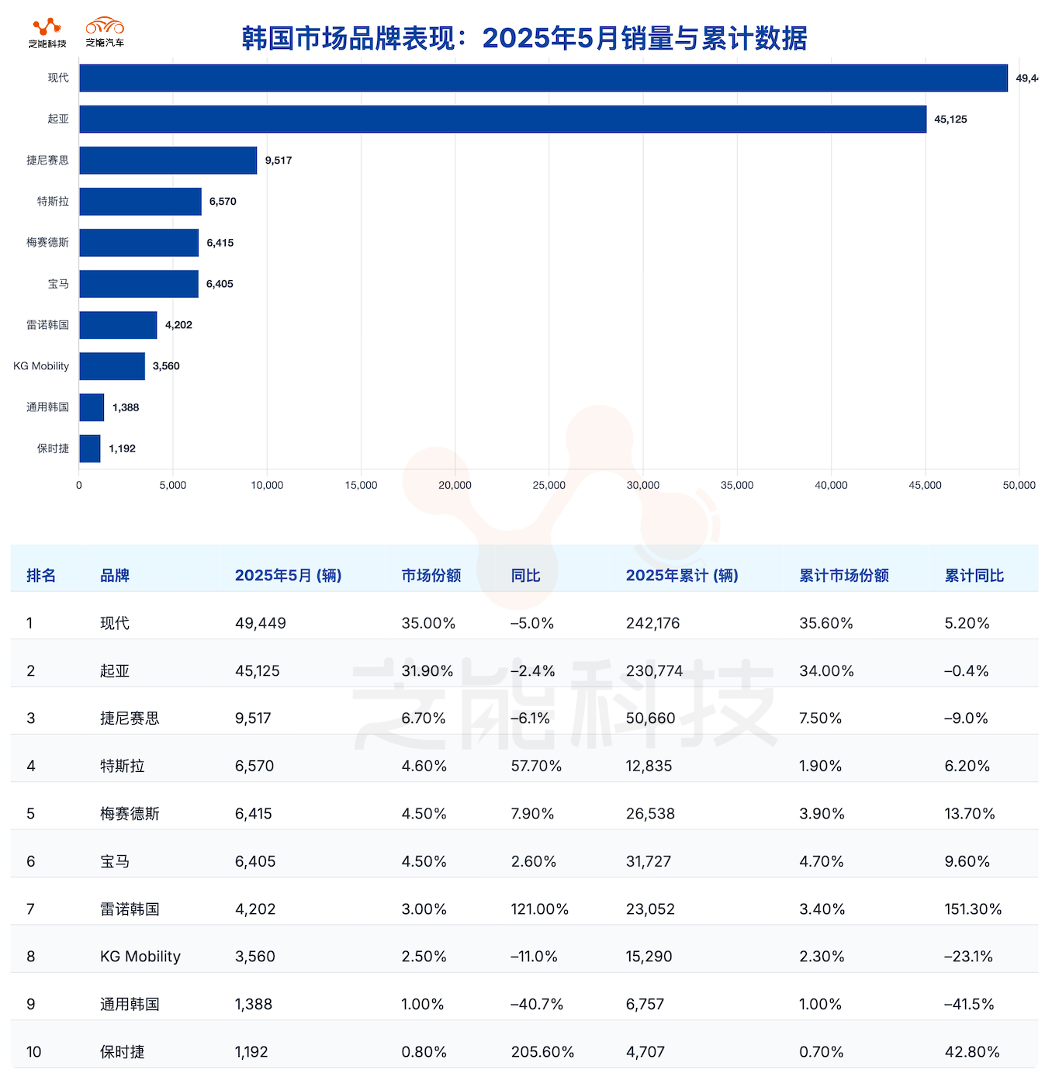
◎ Tesla stood out with a remarkable 57.7% year-on-year sales surge, jumping to fourth place with 6,570 vehicles sold, becoming the best-selling imported brand in the South Korean market.
◎ Renault Korea, fueled by the strong performance of its new Grand Koleos, grew by 121% year-on-year, re-entering the mainstream.
◎ Brands such as Porsche, Polestar, and BYD also demonstrated notable growth rates, especially Polestar with a stunning 1416.7% increase. While the base number was small, the growth trend was unmistakable.
◎ BYD entered the top 20 for the second consecutive month, with a 0.4% market share, gradually establishing its presence in the South Korean market.
◎ Luxury brands generally performed robustly: Mercedes-Benz grew by 7.9%, BMW by 2.6%, and Porsche by an impressive 205.6%.
These brands gradually formed localized advantages in segments such as electrification and premium SUVs, benefiting from the increasing demand for luxury and new energy vehicles in the South Korean market.
02
Changes in Model Structure: Domestic 'Mid-to-Large SUVs' Break Through, Foreign 'Electric Luxury Cars' Gain Popularity
Domestic Cars
◎ The Kia Sorento maintained its top position with sales of 7,734 vehicles, but the Hyundai Palisade came close with a record 7,682 vehicles sold, just 52 vehicles shy. The latter surged by 475.4% year-on-year, setting a new monthly sales record for the Palisade and posing a substantial threat to the long-time champion Sorento.
This surge was not a fluke but the result of the Palisade successfully meeting the needs of mid-to-high-end families for spacious and comfortable vehicles through model updates and enhanced configurations, as well as gaining more government and corporate fleet orders.

◎ Other main models such as the Kia Carnival, Hyundai Sonata, and Tucson showed weaker performance with declining rankings. Carnival fell by 7.8% year-on-year, and Tucson plunged by 20.3%.
◎ Additionally, Hyundai's Grandeur, Santa Fe, and other mid-to-high-end sedans and SUVs also experienced double-digit declines, indicating that competition in this segment was becoming saturated and being diverted by large SUVs and imported premium models.
◎ In terms of new energy vehicles, Kia EV3, EV4, Hyundai Ioniq 5, and Ioniq 6 made the list, with Ioniq 6 doubling its sales year-on-year. However, overall sales remained at a low level, suggesting that while local brands have a presence in the new energy sector, they have yet to achieve significant breakthroughs.
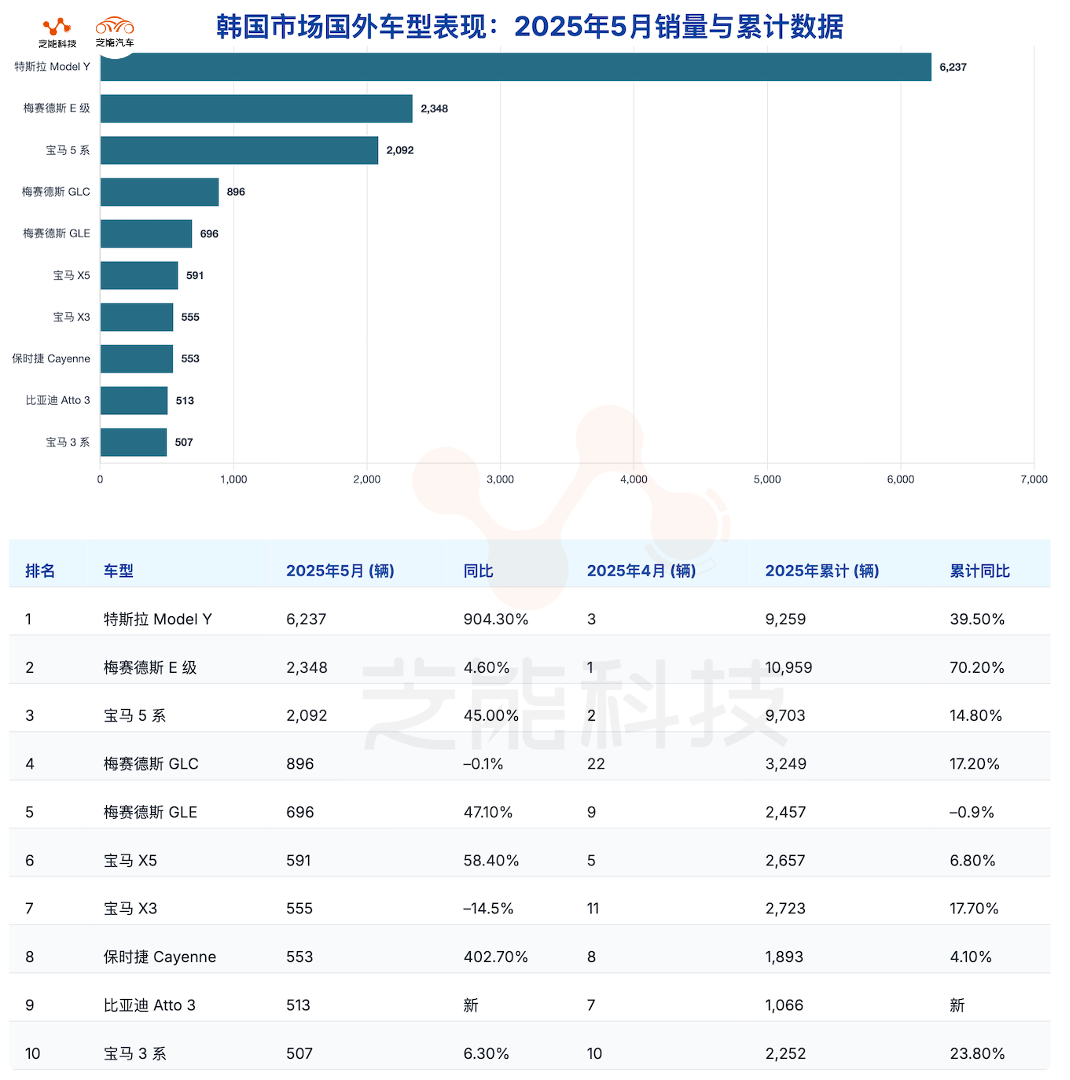
Imported Cars
◎ Tesla Model Y topped the list with 6,237 vehicles sold, surging more than ninefold year-on-year and far outpacing other imported models.
◎ The second and third places were occupied by the Mercedes-Benz E-Class and BMW 5 Series, both maintaining stable growth, forming a 'big three' pattern of high-end mid-to-large vehicles.
◎ Porsche Cayenne grew by 403% year-on-year, becoming the most dynamic product among high-end SUVs, ranking eighth.
◎ BYD Atto 3 ranked ninth, entering the top 10 for the second consecutive month, indicating that its pure electric SUV products were gradually entering the mainstream consumer field of vision.
◎ High-end electric models such as Polestar 4, Model 3, and Mercedes-Benz CLE also performed prominently, suggesting that South Korean consumers' acceptance of imported electric vehicles with design sense and high technological value continued to rise.
◎ Traditional hybrid and entry-level imported cars such as the Lexus ES and Toyota RAV4 saw varying degrees of sales decline, partly due to competition from rival models and partly due to consumer upgrading.
Summary
Behind the overall stability of the South Korean automotive market in May 2025 lies an increasingly apparent trend of structural changes. Traditional giants Hyundai and Kia still firmly hold their dominant positions, while consumers' preference for premium and electrified products is gradually strengthening.

